We’ve all heard the phrase, “They don’t make them like they used to”—and in the realm of acoustic guitars, truer words were never spoken. As Richard Miller, an avid collector will tell you, the allure of a vintage acoustic guitar is hard to resist, with its warm tonal resonance and evocative visible wear; each scratch and scuff a testament to the musical history it embodies.
The year was 1985 when I first ran my fingers over the frets of my father’s 1963 Martin D-28. The quality of that first chord struck a chord within me. Since that moment, I’ve been enamoured by the unmistakable charm of vintage acoustic guitars. With my lifetime of experience and countless hours scouring through varied collectible guitars, today, I invite you on this enlightening journey into the captivating world of vintage acoustic guitars.
A vintage acoustic guitar isn’t just an instrument; it’s a collectible piece of history, a sound investment, and a joy to play. Understanding value, rarity, and tone are key to appreciating and procuring the right instrument for you. Allow me to guide you through the intriguing world of recognizable trademarks, discerning value, and the indelible allure of the historic tones embedded within these classic beauties.
Recognizing Vintage Acoustic Guitars
Trademarks of Martin Vintage Guitars
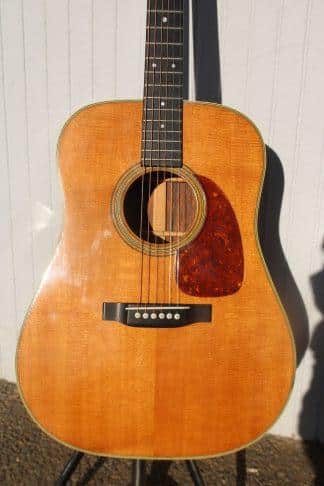
Continuing from our exploration of key facets in recognizing vintage acoustic guitars, the particular trademarks of Martin vintage guitars warrant special mention. Having started my guitar journey with a Martin vintage guitar, the design and tone of these instruments have a notable place in my heart.
Martin’s vintage guitars represent the epitome of innovation in vintage guitar design. Founded in 1833, Martin has consistently evolved its designs to deliver superior sound quality, providing an invaluable addition to any vintage collection. When you hold and play a Martin vintage, you not only experience rich, resonant tones but also touch a piece of music history. The extensive range of Martin’s designs spans dreadnoughts, orchestra models, and grand concerts, each offering distinct characteristics.
The distinctive headstock shape and unforgettable tone of these guitars are iconic markers of Martin’s craftsmanship – in a blind tone test, a guitar enthusiast can identify a Martin, such is their unique sound. The quality and characteristics of Martin’s vintage guitar collection are profound and contribute significantly to understanding the appeal of vintage acoustic guitars as a whole.
As we transition into exploring the highlights of Gibson’s old guitars in the following section, it’s crucial to emphasize the inherent value of each brand’s unique contributions to the vintage acoustic guitar world. In doing so, we gain a comprehensive understanding of why these instruments continue to be sought after by enthusiasts and collectors worldwide.
Highlights of Gibson Old Guitars
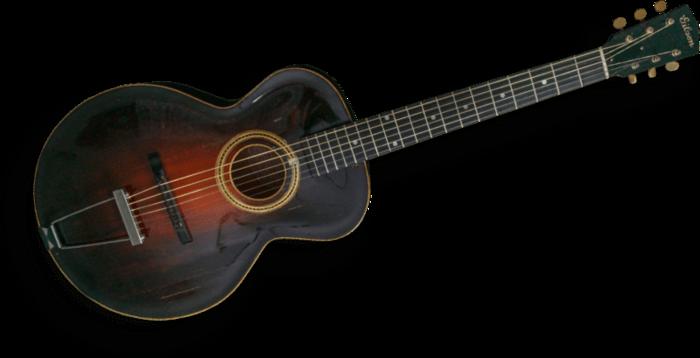
Gibson has always held a special place in my heart for their cutting-edge design of archtop acoustic guitars. With unrivalled craftsmanship and an invincible legacy, Gibson old guitars continue to breathe life into the realm of vintage acoustic guitars.
Every archtop acoustic guitar made by Gibson displays a distinct marriage of innovation and tradition. Their curved, violin-like shape allows for a forceful, artistic tone – a characteristic that has placed Gibson as one of the leaders in the archtop realm. This sound, unique to Gibson old guitars, is a real treasure for experiencing the timeless charm of vintage acoustics.
One distinguishing factor of Gibson’s old guitars is their decades of seasoned wood. With the passing years, these guitars have developed rich and full tonal qualities that are sequences more profound than newer models. The more the guitar ages, the better it sounds – a testament to Gibson’s remarkable craftsmanship.
Gibson’s vintage guitars have become iconic due to their usage by legendary musicians. This legacy of music and history revolves around Gibson old guitars, adding an unprecedented layer of value and rarity. When you play a vintage Gibson, you’re not just playing an instrument, but a piece of music history.
A consistent theme with Gibson’s old guitars is progress, upholding a heritage so dynamic, that it’s near impossible to imitate. They hold an enchanting mix of artisanal flair, sonic superiority, and historical prominence, making them a significant asset for any vintage acoustic guitar enthusiast.
As we delve deeper into understanding the value of a vintage acoustic guitar, it’s essential to appreciate the worth that Gibson old guitars bring to this realm. It’s not just about owning a guitar; it’s about owning a story that echoes through the chambers of musical evolution.
Understanding the Value of a Vintage Acoustic Guitar
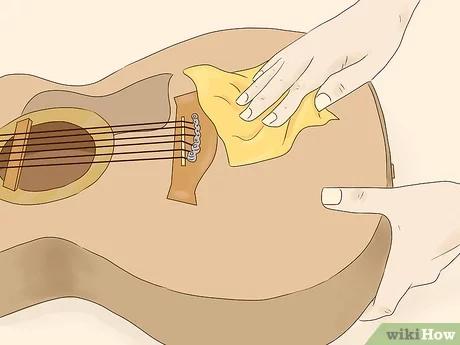
Over my years of collecting and playing vintage acoustic guitars, I’ve refined my ability to estimate the value of even the rarest antique guitars. With a keen eye and a mindful ear, I can discern what sets these unique instruments apart, helping me understand their real, intrinsic value. In this chapter, I share how you can recognize and understand this value too.
Many factors contribute to guitar vintage value. Among them, the condition, rarity, quality of the guitar, and the desire of the market are key considerations. An instrument with a well-maintained condition, rarity from a reputable brand, and a strong demand market can carry high value.
Imagine owning a vintage acoustic guitar that’s not just a musical instrument, but also a precious collectible investment. How would you determine its value? It’s not as complex as it might seem. For instance, I once found a pre-war Martin guitar in excellent condition at a garage sale. The owner unknowingly priced it far below its worth because she didn’t realize the rarity and demand for such an instrument. Holding that guitar was like holding a piece of history, not to mention the rich, resonant sound that only comes from decades of carefully aged wood. Recognizing the potential value in that moment was an exhilarating feeling.
Such experiences make me appreciate the thrill and satisfaction of unlocking hidden value in vintage guitars. Part of that thrill stems from understanding rare acoustic guitars – their origin, their unique features, and their guitar vintage value. But it’s also about appreciating the craftsmanship that went into making them. Lovingly cared for or expertly restored, these guitars carry a unique provenance and a distinct tonal quality that sets them apart.
Take, for example, a beautiful and rare Gibson L-5 from the 1930s, a superstar of the vintage guitar world. When I play it, I’m not only creating music; I’m also stepping back in time, touching a piece of history, and experiencing a sound that modern guitars can’t replicate. That connection to the past adds a layer of worth to the guitar vintage value that can’t really be quantified.
Ultimately, understanding the value of a vintage acoustic guitar comes down to a deep appreciation for music, history, and the art of guitar making. Our acoustic ancestors may no longer be with us, but their legacy lives on in these remarkable instruments.
To be continued…
In the next chapter, we delve deeper into the world of used and pre-owned acoustic guitars, and how they can be just as worthwhile an investment as their vintage counterparts. In the journey of guitar collecting, every instrument tells a story, and each has its own part to play in the melody of our lives.
Used and Pre-Owned Acoustic Guitars
The Vintage Tone Wood Difference
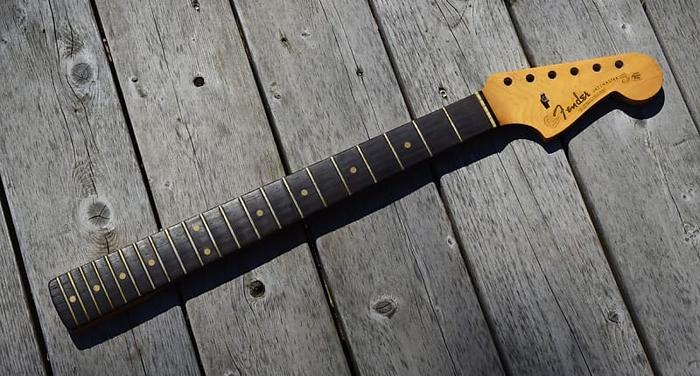
After delving into the intriguing world of used and pre-owned acoustic guitars, I’d love to share my insights into an invaluable component of these wonderful instruments: guitar vintage tone woods. It’s often a subtlety overlooked by the uninitiated, yet the choice of wood plays a crucial role in a guitar’s voice. This was a revelation in my own musical journey, the moment where I discovered the magic hiding within traditional acoustic guitars.
The inherent characteristics of vintage-tone woods contribute uniquely to the overall sound of the guitar. These traditional woods, seasoned through the ages, create a unique tonal palette, delivering mature sounds full of depth and richness. Mahogany, for instance, imparts a warm, earthy tone; rosewood offers a broad frequency range; while maple creates a bright, focused sound. Such distinct tonal qualities shape the voice of the guitar, infusing each strum and pluck with personality.
The choice of tone wood in vintage guitars isn’t simply aesthetic, but a decisive factor influencing the guitar’s resonation, sustain, and projection. The intricacies of these woods, combined with the precision of the luthier’s craft, give birth to an instrument with character and resonance unmatched by modern counterparts.
In conclusion, discovering the unique allure of vintage tone woods is akin to unearthing precious gems in our quest for authenticity and tone. Appreciating this element will surely enrich your understanding and appreciation of vintage guitars. As we move onto exploring vintage acoustic guitar collections, let this newfound appreciation guide you towards instruments that speak to your soul, shaping your music with the resonance and character that only vintage tone woods can deliver.
Vintage Acoustic Guitar Collections
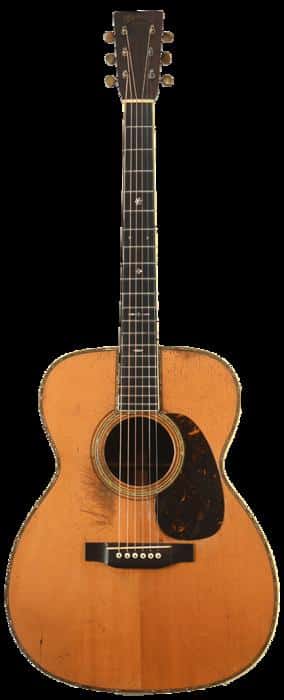
Delving into the fascinating world of acoustic guitar collections, especially vintage assortments, is a rewarding journey for any music lover. There is something profoundly magical about the allure of vintage guitar hardware, carrying a rich legacy of tones and stories that reconnect us with music’s timeless lineage.
Every vintage guitar I’ve amassed has an enchanting narrative within its structure – the tonal imprint left by past artists, the worn hardware reflecting the passage of time, and the handcrafted precision that contributed to its unique sound profile. These elements endow each piece in the collection with invaluable depth and personality.
Building a vintage acoustic guitar collection isn’t merely about accumulating instruments; it’s about gathering a centuries-spanning spectrum of sound profiles. The interplay between age, craftsmanship, and unique timbre contributes to the versatile tonal palette of these pre-owned instruments, thereby enriching your musical experience.
Moreover, each addition to your collection is also an insightful lesson about the evolution and history of music as represented by the acoustic guitar. You get to appreciate the subtle nuances that distinguish one era’s sound from another, offering an audio timeline that traces the harmonic progression of music throughout the decades.
Through the journey of building my collection, I have gained a richer understanding of the vintage guitar’s value, rarity, and tone. I’ve witnessed how this knowledge enhances not only my musical accomplishments but also my respect and passion for the art.
As we explore further into the realms of vintage acoustic guitars, let’s also delve deeper into the blends of tonewoods, their impact on tone generation, and the true essence of vintage tonality.
FAQs
What factors determine the value of a vintage acoustic guitar?
The value of a vintage acoustic guitar is determined by a variety of factors, including the manufacturer, the exact model, the condition it’s kept in, and its age. Some of the most valuable models are those with distinctive designs or rare features, making them highly sought after by collectors.
Why are older guitars so sought after?
Older guitars are often sought after due to their “broken-in” tone — a unique sound quality that develops over time as the guitar’s wood matures. Vintage guitars made by renowned manufacturers can also have historical or sentimental value.
How can you tell if a vintage acoustic guitar is a rare model?
Determining the rarity of a vintage acoustic guitar involves research. Check important details like the serial number, model number, and any distinctive features. Cross-referencing this information with a reputable guitar database, books, or experts in the field can reveal if it’s a rare model.
Conclusion
In journeying through this insightful exploration of vintage acoustic guitars, we have uncovered their value and rarity, and deeply experienced the magic of their distinctive tones. Their timeless design and resounding harmony are indeed captivating, aren’t they?
Ever wondered why vintage guitars tug at our heartstrings so beautifully? It is the intersection of their history, craftsmanship and tonal richness, all echoing within every note. Here’s to ongoing journeys of exploring this charming acoustic world.
From the recognizable traits of Martin Vintage Guitars to the standout features of Gibson Old Guitars, we have meandered through the complex terrain of identifying these timeless treasures. We dived into the significance of their values, strummed the strings of used and pre-owned instruments, and felt the reverberating sense of the Vintage Tone Wood Difference.
As a dedicated collector and performer, I’m Richard Miller, and vintage acoustic guitars have been my lifelong love. They aren’t just mere instruments or additions to a collection, but storytellers that have shaped my performances and compositions. They have echoed decades of music history and whispered tales of forgotten crafts. It is my hope that you too will follow the same path, appreciating the unequivocal charm of a vintage acoustic guitar.